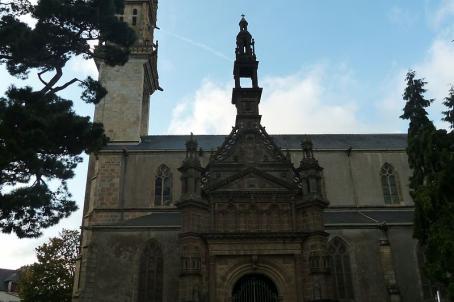Church of Saint-Yves
The present church, dedicated to St. Yves (patron saint of judges and lawyers) was built during the 16th and 17th centuries, on the site of the former castral chapel dating from the Middle Ages. Despite the extraordinary finesse of the sculptures of the south portal or the double-gallery bell tower, considered to be one of the most beautiful in Leon, it is inside the church that the wonder reaches its peak: starting with the polychrome oak rood screen with its grotesque figures, the sandpits mixing religious and secular scenes, or the large stained glass window of the Passion made in 1539 (2nd largest stained glass window in Brittany with 21.05 m²). The Renaissance stained-glass window bears witness to the Flemish influence in Breton art (in the 16th century, Brittany occupied a prominent place in the trade between the Netherlands and Spain).
About this building
The church with three naves is covered by a wooden cradle, the vault of the central nave and the choir having preserved its paintings. The rood screen is supported by the pillars of the choir and is extended, on these pillars, by two canopies housing statues. The walls of the nave are made of monoliths of slate schist. The funerary chapel, built in 1639, runs parallel to the western façade of the church. It is a work of the 17th century with all the characteristics of the 16th.






